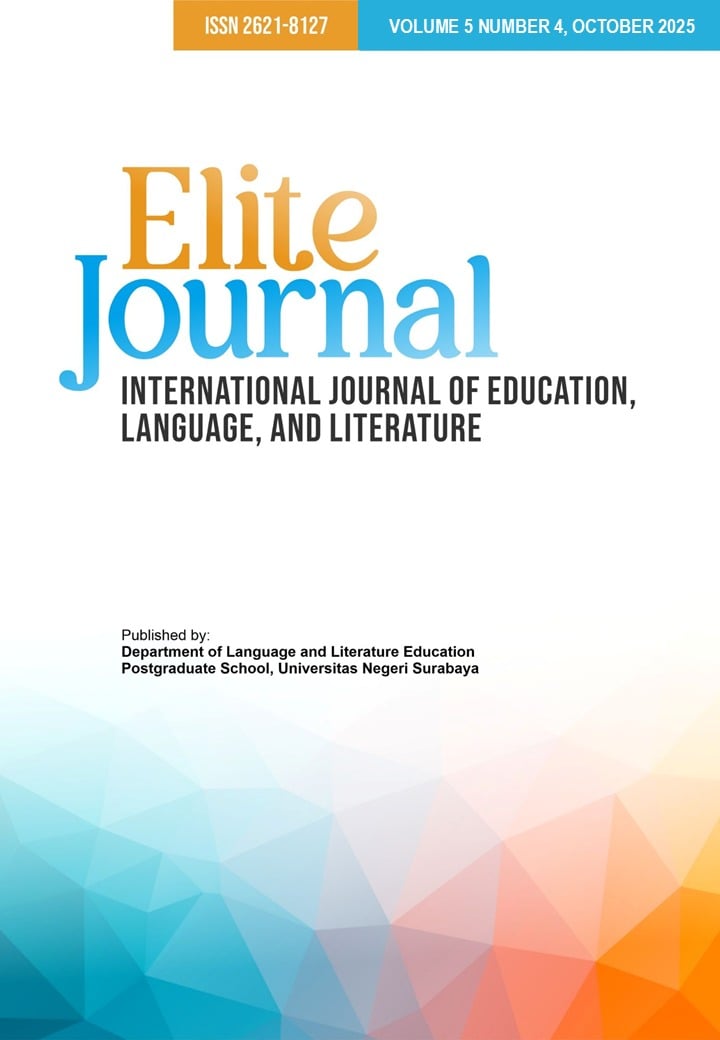SOCIAL MOBILITY IN THE PURSUIT OF HAPPYNESS (2006): A SOCIOLOGICAL PERSPECTIVE
DOI:
https://doi.org/10.26740/elitejournal.v5n4.p76-87Keywords:
Social Class, Social Mobility, Social Stratification, Upward MobilityAbstract
The Pursuit of Happiness is a biopic film released in 2006 and directed by Gabriele Muccino. The film depicts social mobility and various issues related to a stratified society. This study examines how Chris Gardner embodied social mobility and the factors behind it. The data was derived from monologues, dialogues, and narrative segments in film scripts. Furthermore, the analysis employed the close reading method alongside Sorokin’s theory of social mobility as articulated in “Social and Cultural Mobility” (1959). The findings portrayed how Chris Gardner’s experience embodies social mobility, particularly upward mobility. This can be observed by his shift from a lower class (homelessness, financial instability, and unpaid internships) to an upper class (securing a permanent position as a stockbroker and successfully founding his own stock company). Moreover, the causes of this upward mobility include an environmental change (entering the stockbroker profession), differences between parents and their children (variations in characteristics between Chris and his parents), and defective social distribution (possessing talents and abilities confined to the upper classes).
References
Alrayes, F. M. Y. (2020). Social Mobility in James Kelman’s A Disaffection. Al-Adab Journal, 1(134), 43–56.
Assari, S. (2018). Parental Education Attainment and Educational Upward Mobility; Role of Race and Gender. Behavioral Sciences, 8(11), 1–15.
Conerly, T. R., Holmes, K., & Tamang, A. L. (2021). Introduction to Sociology 3e. OpenStax.
Eyles, A., Major, L. E., & Machin, S. (2022). Social mobility - past, present and future: the state of play in social mobility. The Sutton Trust.
Haugen, M. W. (2022). The Lottery Fantasy and Social Mobility in Eighteenth-Century Venetian Literature: Carlo Goldoni, Pietro Chiari, and Giacomo Casanova. Italian Studies, 77(3), 253–270.
Jalali, Z. S., Introne, J., & Soundarajan, S. (2023). Social stratification in networks: insights from co-authorship networks. Journal of the Royal Society Interface, 20(198), 1–12.
Legewie, N. M. (2021). Upward Mobility in Education: The Role of Personal Networks Across the Life Course. Social Inclusion, 9(4), 81–91.
Li, Y. (2025). Education, Social Mobility, and Barriers in Nigerian Urban Novels. International Journal of Education and Humanities, 18(3), 47–49.
Manstead, A. S. R. (2018). The psychology of social class: How socioeconomic status impacts thought, feelings, and behaviour. British Journal of Social Psychology, 57(2), 267–291.
Moran, J. (2023). An Intimate History of Social Mobility in Post-War Britain. Cultural and Social History, 20(2), 249–265.
Nunn, D. A., Johnson, D. S., Monro, D. S., Bickerstaffe, D. T., & Kelsey, S. (2007). Factors Influencing Social Mobility. Her Majesty’s Stationery Office.
Ohrvik, A. (2024). What is close reading? An exploration of a methodology. Rethinking History, 28(2), 238–260.
Ramadhan, H., & Zakky, A. (2024). Tennis as Social Mobilization to Achieve the American Dream in the Film King Richard (2021). Litteratura: Jurnal Bahasa Dan Sastra, 3(1), 17–34.
Sorokin, P. A. (1959). Social and Cultural Mobility. New York: The Free Press.
Wright, C. (2023). Crossing the borders of social class: Social mobility as translational experience. Translator, 29(4), 480–493.
Downloads
Published
How to Cite
Issue
Section
License
Copyright (c) 2025 Nabilah Rona Abdullah

This work is licensed under a Creative Commons Attribution 4.0 International License.
 Abstract views: 88
,
Abstract views: 88
, PDF Downloads: 43
PDF Downloads: 43





